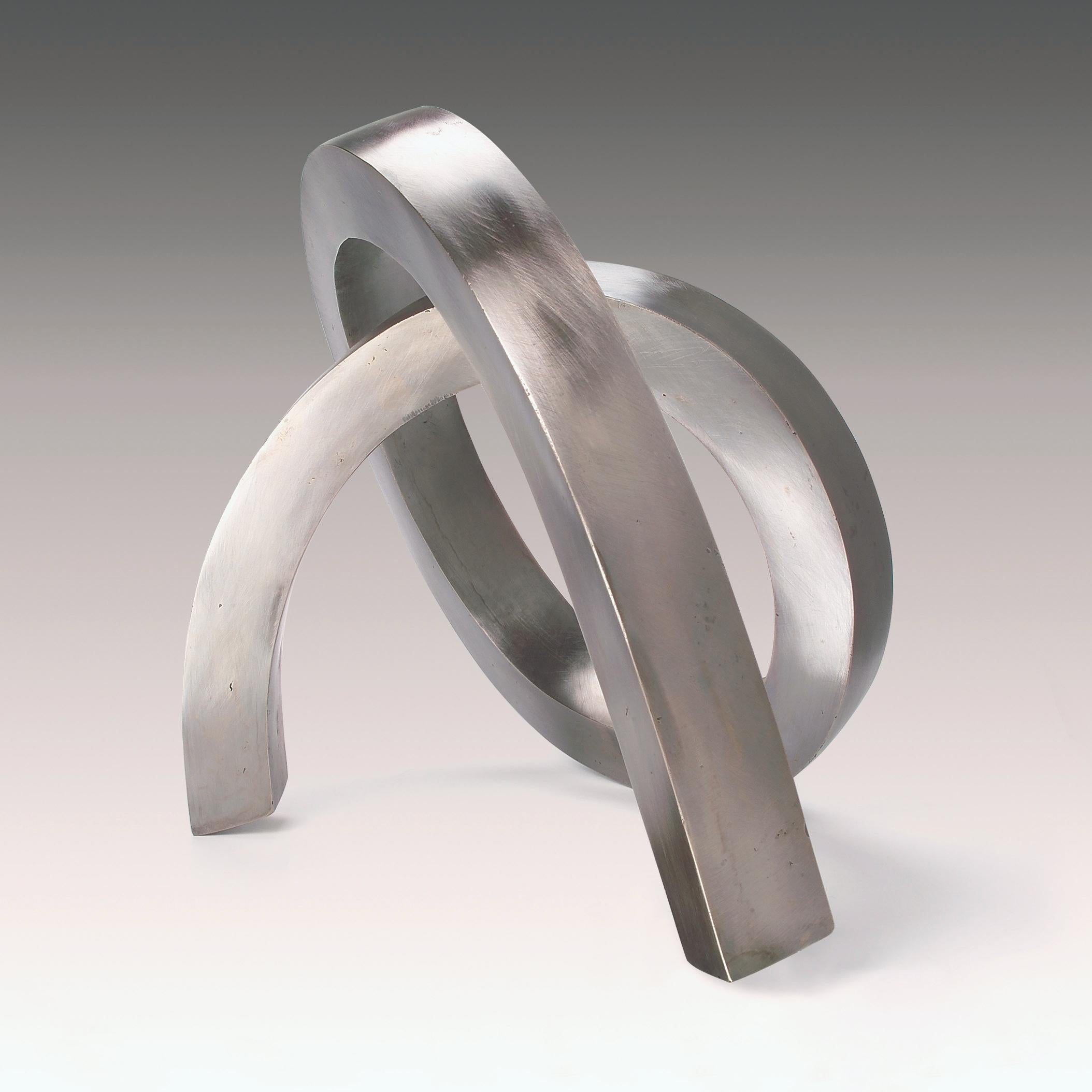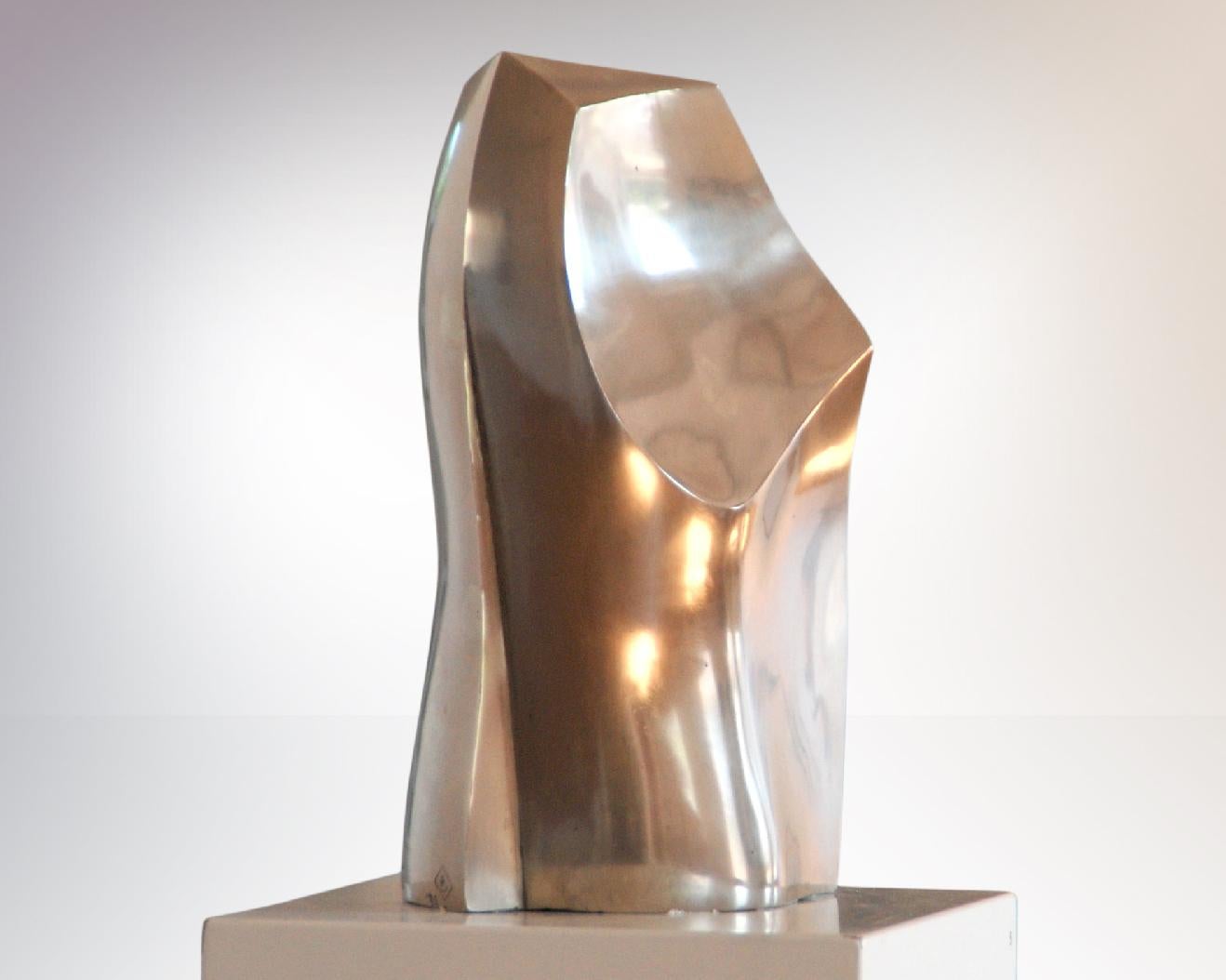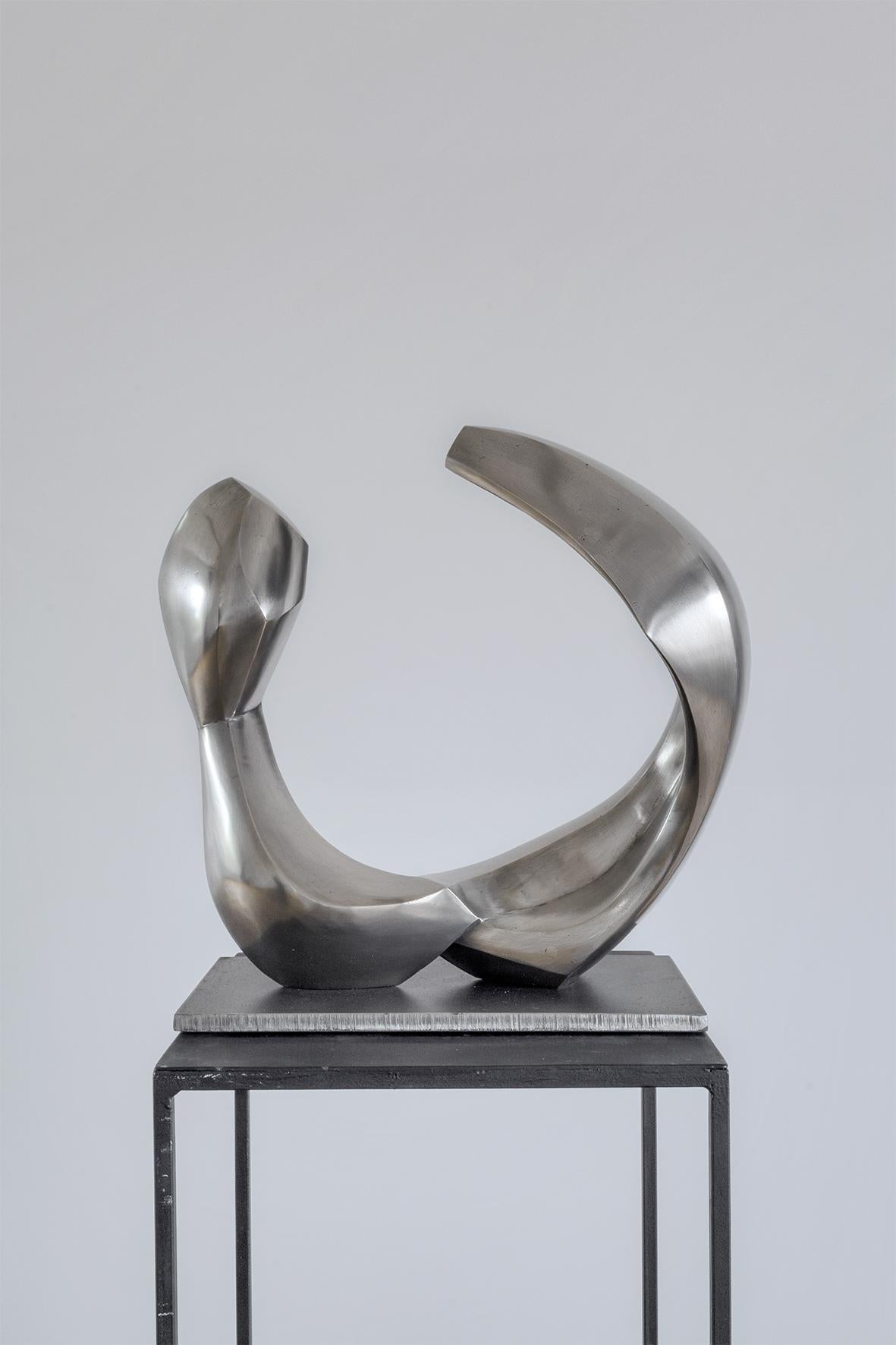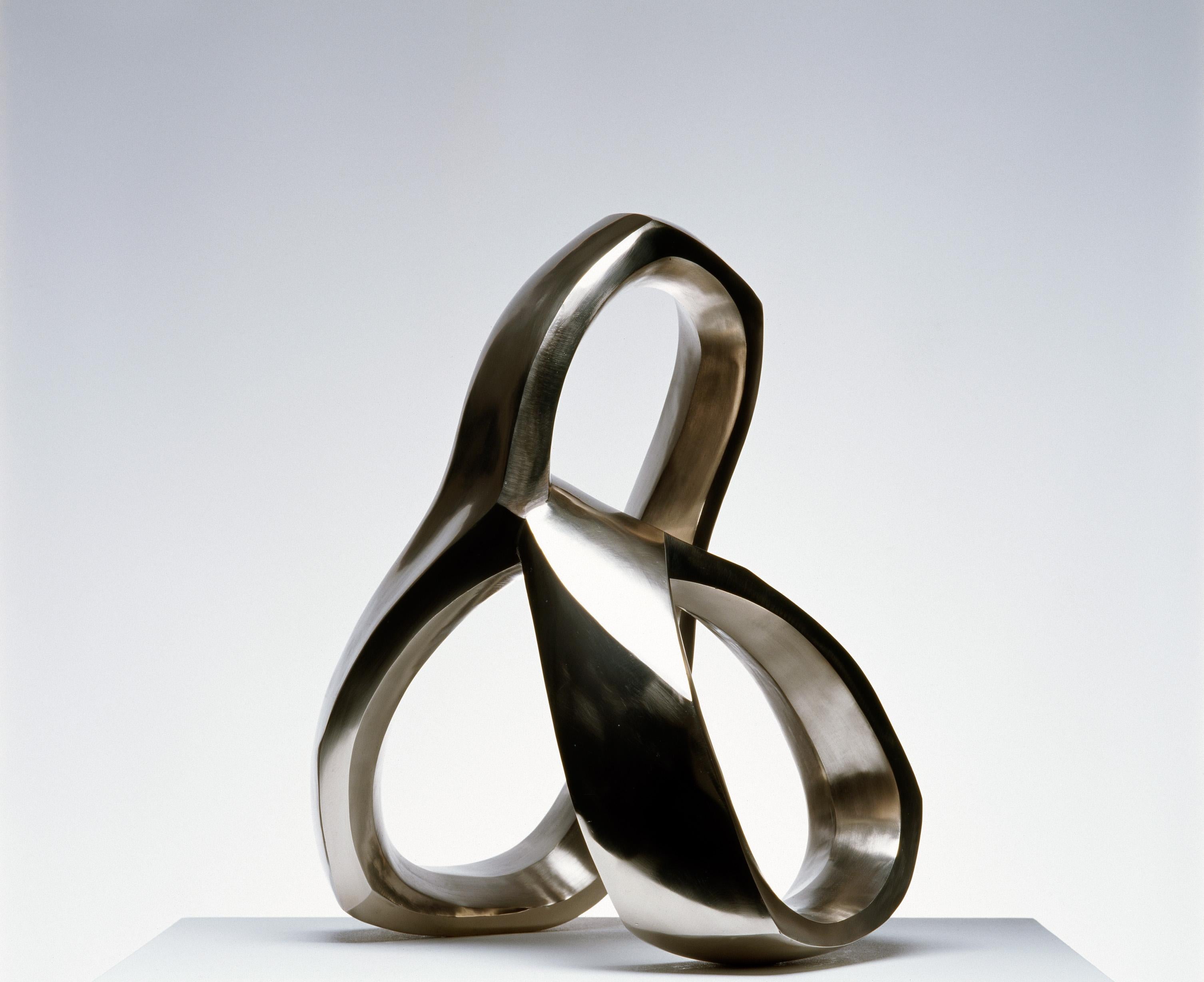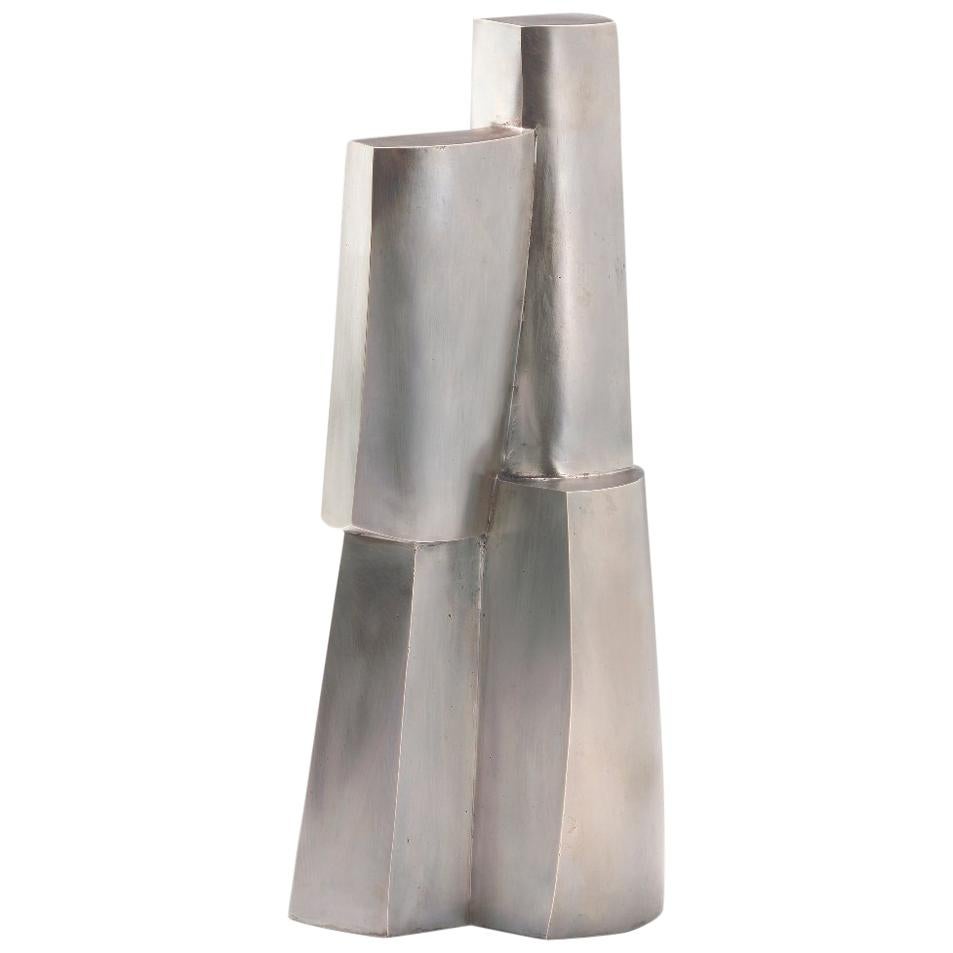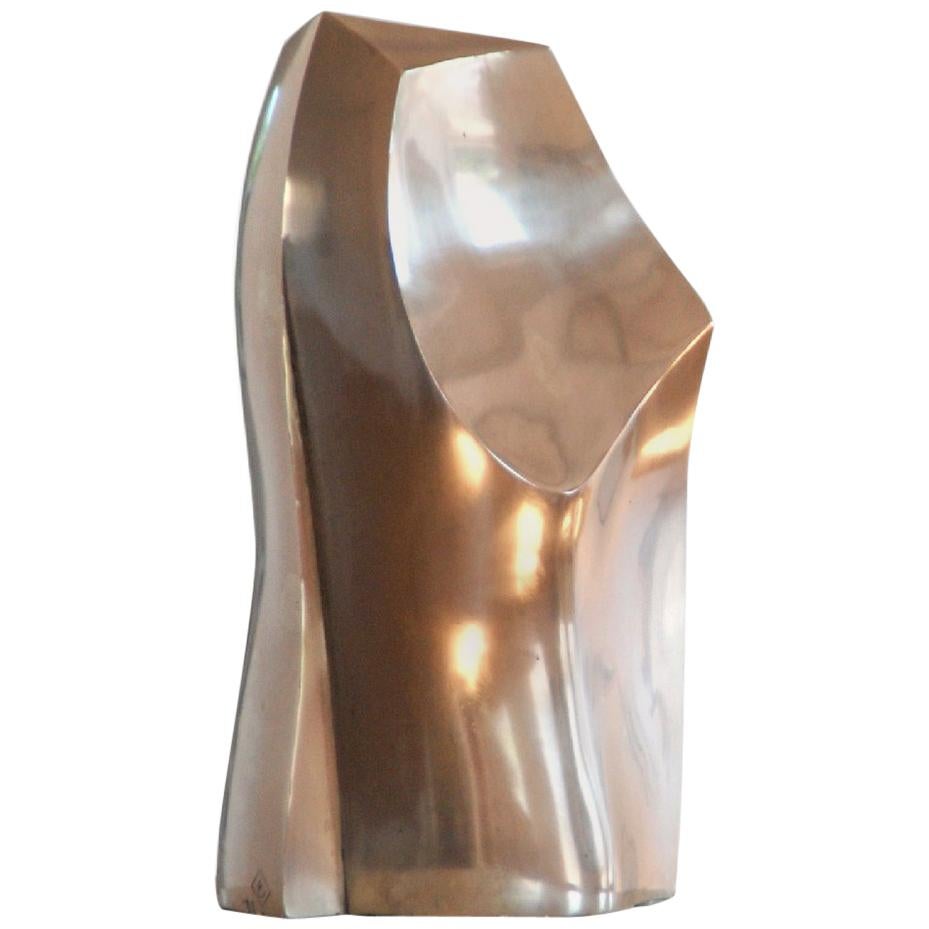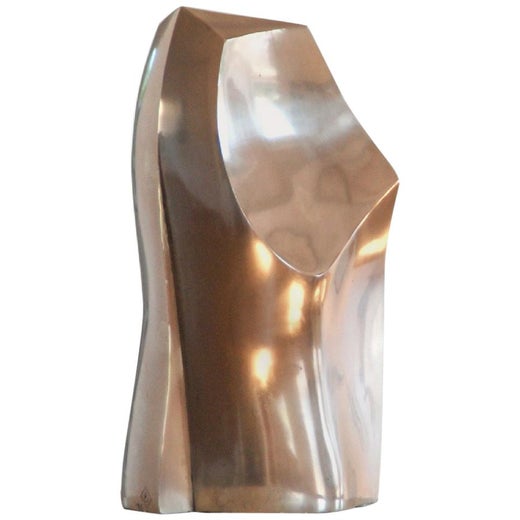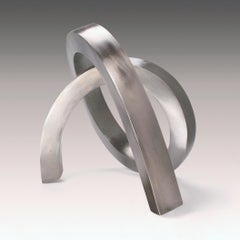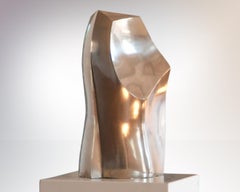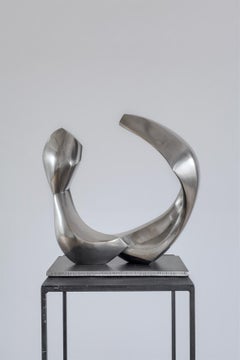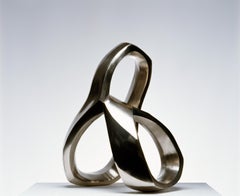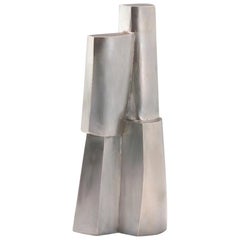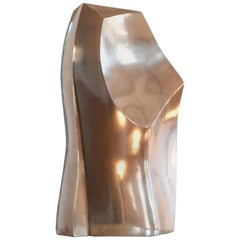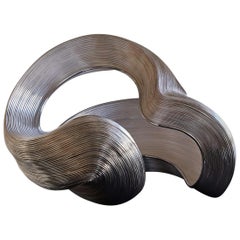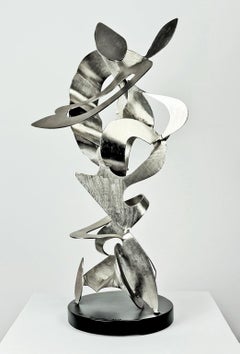Items Similar to Silver Sculpture 'Curva II' by Carola Eggeling
Want more images or videos?
Request additional images or videos from the seller
1 of 4
Carola EggelingSilver Sculpture 'Curva II' by Carola Eggelingcirca 2020
circa 2020
$9,628.98
£7,132.52
€8,100
CA$13,299.47
A$14,843.61
CHF 7,775.49
MX$180,994.85
NOK 98,337.05
SEK 92,217.42
DKK 61,667.37
About the Item
Silver Sculpture 'Curva II' by Carola Eggeling
Abstract sculpture with beautiful curved lines.
German silver sculpture
Silver - Alpaca
Certificate of authenticity
Numbered and signed artwork
Limited edition of 9
Measures: H. 34 x 30 x 29 cm
Eggeling's are pure forms, the instruments of conception are shape, light and movement. New realities emerge: spiritual, unnaturalistic and yet close to nature. They draw their energy from the polar opposition of forces. Carola Eggeling lives and works in Neuss and in Deia.
The three-dimensionality of the sculptures allows the viewer to rediscover and interpret them in new ways. It is a particularly surprising characteristic of the sculptures that they always give a different image from the hundreds of viewpoints that the viewer can take.
- Creator:Carola Eggeling (German)
- Creation Year:circa 2020
- Dimensions:Height: 13.39 in (34 cm)Width: 11.82 in (30 cm)Depth: 11.42 in (29 cm)
- Medium:
- Movement & Style:
- Period:
- Condition:
- Gallery Location:Paris, FR
- Reference Number:1stDibs: LU1015310155232
Carola Eggeling
Carola Eggeling is a German artist, she creates sculptures in plaster. The first step is to make a structure out of wire, an original form based on a spontaneous idea. This wire mesh is then covered with plaster, so that a plastic structure is gradually formed. During this process, the sculptor is constantly discovering possibilities to make visible and to shape her own inner and invisible world. Like many classical and modern sculptures, her creations not only occupy a physical space, they also create and describe a space. They invite one to look and participate in the spiritual and captivating play of volumes, surfaces, lines and spaces. The classical and abstract sculptures produce an astonishing effect despite its apparent simplicity: elegant and strong at the same time. The three-dimensionality of the sculptures gives the viewer the possibility of rediscovering and interpreting it again and again. A particularly surprising feature of the sculptures is that they always give a different image from the hundreds of points of view that the viewer can adopt.
About the Seller
5.0
Vetted Professional Seller
Every seller passes strict standards for authenticity and reliability
1stDibs seller since 2018
13 sales on 1stDibs
- ShippingRetrieving quote...Shipping from: Neuss, Germany
- Return Policy
Authenticity Guarantee
In the unlikely event there’s an issue with an item’s authenticity, contact us within 1 year for a full refund. DetailsMoney-Back Guarantee
If your item is not as described, is damaged in transit, or does not arrive, contact us within 7 days for a full refund. Details24-Hour Cancellation
You have a 24-hour grace period in which to reconsider your purchase, with no questions asked.Vetted Professional Sellers
Our world-class sellers must adhere to strict standards for service and quality, maintaining the integrity of our listings.Price-Match Guarantee
If you find that a seller listed the same item for a lower price elsewhere, we’ll match it.Trusted Global Delivery
Our best-in-class carrier network provides specialized shipping options worldwide, including custom delivery.More From This Seller
View AllSilver Sculpture 'Curva I' by Carola Eggeling
By Carola Eggeling
Located in Paris, FR
Silver Sculpture 'Curva I' by Carola Eggeling
Abstract sculpture with beautiful curved lines.
German silver sculpture
Silver - Alpaca
Certificate of authenticity
Numbered and signe...
Category
21st Century and Contemporary Abstract Abstract Sculptures
Materials
Silver
Silver Sculpture 'Phönix I' by Carola Eggeling
By Carola Eggeling
Located in Paris, FR
Silver Sculpture 'Phönix I' by Carola Eggeling
Abstract sculpture with beautiful curved lines.
German silver sculpture (alloy of copper, nickel and zinc)
Numbered and signed artwork...
Category
21st Century and Contemporary Abstract Abstract Sculptures
Materials
Silver
Aluminium Sculpture 'Dialog' by Carola Eggeling, Aluminum Polished
By Carola Eggeling
Located in Paris, FR
Aluminium Sculpture 'Dialog' by Carola Eggeling
Abstract sculpture with beautiful curved lines.
German aluminum sculpture
Numbered and signed artwork
Limited edition of 9
Measures: ...
Category
21st Century and Contemporary Abstract Abstract Sculptures
Materials
Steel
Aluminium Sculpture 'Tatu' by Carola Eggeling, Aluminum Polished
By Carola Eggeling
Located in Paris, FR
Aluminum Sculpture 'Tatu' by Carola Eggeling
Abstract sculpture with beautiful curved lines.
German aluminum sculpture
Numbered and signed artwork
Limited edition of 6
Measures: H....
Category
21st Century and Contemporary Abstract Abstract Sculptures
Materials
Steel
Aluminum Wall Sculpture 'Wandobjekt 02/21' by Carola Eggeling, Aluminum Brushed
By Carola Eggeling
Located in Paris, FR
Aluminum Wall Sculpture 'Wandobjekt 02/21' by Carola Eggeling
Abstract sculpture with beautiful curved lines.
German aluminum sculpture
Aluminum brushed
Numbered and signed artwork
...
Category
21st Century and Contemporary Abstract Abstract Sculptures
Materials
Steel
Bronze Black Sculpture 'O.T. II' by Carola Eggeling, Patinated Bronze
By Carola Eggeling
Located in Paris, FR
Bronze Black Sculpture 'O.T. II' by Carola Eggeling
Abstract sculpture with beautiful curved lines.
German bronze black sculpture
Numbered and signed artwork
Limited edition of 9
Me...
Category
21st Century and Contemporary Abstract Abstract Sculptures
Materials
Bronze
You May Also Like
Silver Sculpture 'Turm I' by Carola Eggeling
By Carola Eggeling
Located in Paris, IDF
Abstract sculpture with beautiful curved lines.
German silver sculpture (alloy of copper, nickel and zinc)
Numbered and signed artwork
Limited edition 2/9
Measures: 47 x 15 x 2...
Category
21st Century and Contemporary German Abstract Sculptures
Materials
Silver, Copper, Nickel, Zinc
Silver Sculpture 'Phönix I' by Carola Eggeling
By Carola Eggeling
Located in Paris, IDF
Abstract sculpture with beautiful curved lines.
German silver sculpture (alloy of copper, nickel and zinc)
Numbered and signed artwork
Limited edition 3/9
Measures: 34 x 13 x 2...
Category
21st Century and Contemporary German Abstract Sculptures
Materials
Silver, Copper, Nickel, Zinc
Contemporary Abstract Silver Sculpture by Nan Nan Liu
Located in London, GB
Nan Nan Liu's sterling silver sculpture reflects her creative interest in natural forms and energies. In this profoundly dynamic and Kinetic example of her...
Category
21st Century and Contemporary British Abstract Sculptures
Materials
Sterling Silver
$12,668 Sale Price
20% Off
"Silver Surf" by Kevin Barrett, Abstract, Silver Metal Sculpture, Tabletop Size
By Kevin Barrett
Located in New York, NY
"Silver Surf" Abstract Metal Sculpture by Kevin Barrett
Nickel-plated bronze
Barrett is noted for creating unique, rhythmic, abstract indoor and outdoor sculpture and wall reliefs.
...
Category
2010s Abstract Abstract Sculptures
Materials
Metal, Bronze
Portal, 15"high stainless steel sculpture
By Mark Leichliter
Located in Loveland, CO
"Portal" by Mark Leichliter
Abstract Sculpture
15x8x3.5" Stainless Steel 3/10
ABOUT THE ARTIST:
I was born in Loveland, Colorado and now reside in nearby Fort Collins. The natural...
Category
2010s Contemporary Abstract Sculptures
Materials
Stainless Steel
'Aria, ' by Marko Kratohvil, Stainless Steel Sculpture
By Marko Kratohvil
Located in Oklahoma City, OK
In this stainless steel sculpture by Marko Kratohvil, the graceful curves of two smooth steel segments meet in movement creating an abstracted figural form. This table top sculpture ...
Category
2010s Abstract Abstract Sculptures
Materials
Stainless Steel
